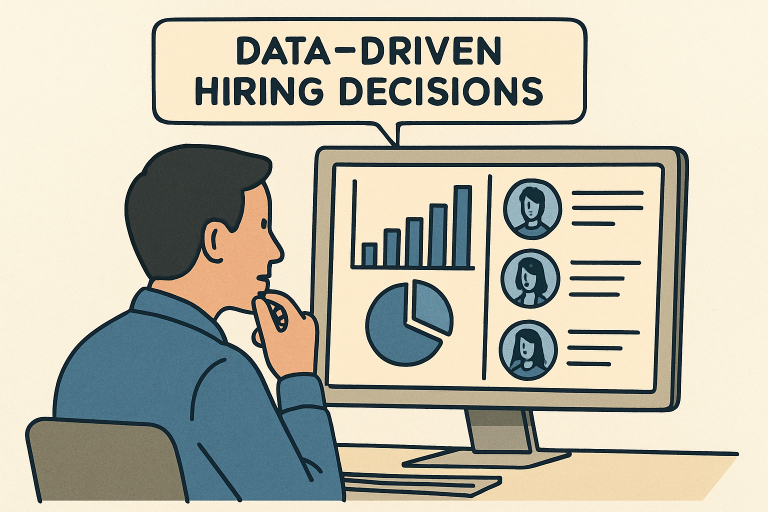In today’s rapidly evolving job market, organizations need to stay agile, informed, and strategic to meet their workforce demands. Leveraging technology and analytics has become essential in this process, with many businesses seeking guidance from an HR analytics company to help crystallize their hiring strategies. Adopting a data-driven approach isn’t just a trend—it’s a transformational shift that streamlines the recruitment process, improves accuracy, and results in better hiring decisions. Data-driven hiring extends beyond efficiency, enabling organizations to evaluate candidates objectively, reduce time-to-hire, and enhance candidate quality. By relying on evidence and automation, companies enhance transparency, build trust, and make smarter, faster decisions, which is essential in today’s competitive talent market.
Table of Contents
Enhancing Hiring Accuracy and Efficiency
Objective analysis of candidate data is at the heart of data-driven hiring. By relying on quantifiable metrics, businesses eliminate guesswork and reduce the risk of mismatches between candidates and roles. Leveraging affordable HR solutions, recruitment teams can access sophisticated tools without straining budgets, making it easier to refine job descriptions, source candidates efficiently, and reliably identify top performers. These insights also enable organizations to track hiring trends over time, allowing them to anticipate future talent needs. Ultimately, a data-driven approach supports more informed and strategic decision-making, thereby strengthening overall workforce planning.

Reducing Unconscious Bias
Traditional hiring methods often invite subjectivity, which can skew outcomes and hinder diversity. Data-driven recruitment uses algorithms and structured assessments to base hiring on objective, measurable factors, rather than on intuition or personal preference. Employing structured analytics helps level the playing field by prioritizing skills, experience, and alignment with company values, rather than demographic or background assumptions.
Leveraging AI Tools to Address Skills Gaps
Artificial intelligence has become an indispensable ally in modern HR. Major enterprises are already reaping the benefits: AI not only automates initial screening and skills assessments, but also recommends upskilling and reskilling programs tailored to employees’ needs. AI-powered training simulations are increasingly used to boost workforce capability and retention. As highlighted by the Financial Times, this technology is instrumental in plugging skills gaps and providing fresh career growth opportunities within organizations. Beyond training, AI helps HR teams identify emerging talent trends and predict workforce needs with greater accuracy. It also enhances employee engagement by personalizing development paths and career recommendations. Over time, organizations that leverage AI can create a more agile, skilled, and motivated workforce, one that is prepared for evolving business challenges.
Improving Candidate Experience
A data-driven recruitment process is not only beneficial for employers but also for job seekers. It supports transparent communication, sets clear expectations, and enables quicker decision-making throughout the candidate journey. According to a 2023 survey, 67% of applicants prefer employers who use transparent, tech-enabled hiring practices. A streamlined application and interview experience keeps top talent engaged and reduces candidate drop-off rates, boosting employer brand reputation.
Promoting Diversity and Inclusion
Data-driven hiring fosters a more inclusive workplace by homing in on standardized qualification criteria and minimizing subjective assessments. When hiring teams use structured data, there is less room for bias—conscious or unconscious—to infiltrate the process. Insights from the 2023 McKinsey Diversity Matters report show that companies employing analytics in their recruitment saw a 24% rise in diverse hires. A diverse, dynamic workforce brings fresh perspectives, spurs innovation, and enhances organizational performance.
Conclusion
Incorporating data-driven hiring practices is transforming how organizations build high-performing teams. By reducing bias, enhancing candidate experience, and enabling proactive workforce planning, data-driven methods drive both immediate and long-term business success. Companies partnering with an HR analytics company to unlock the power of analytics can efficiently align recruitment with business goals, close skills gaps, and champion diversity. Ultimately, data and technology are building the foundation for a more agile, equitable, and thriving workplace.


